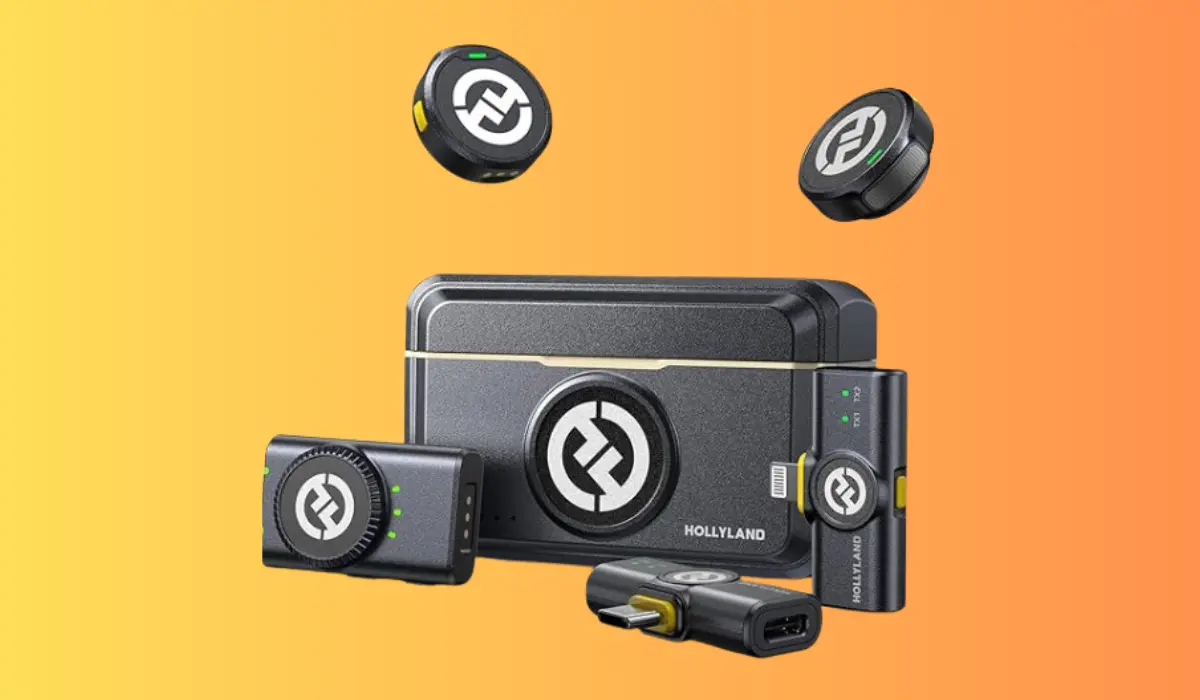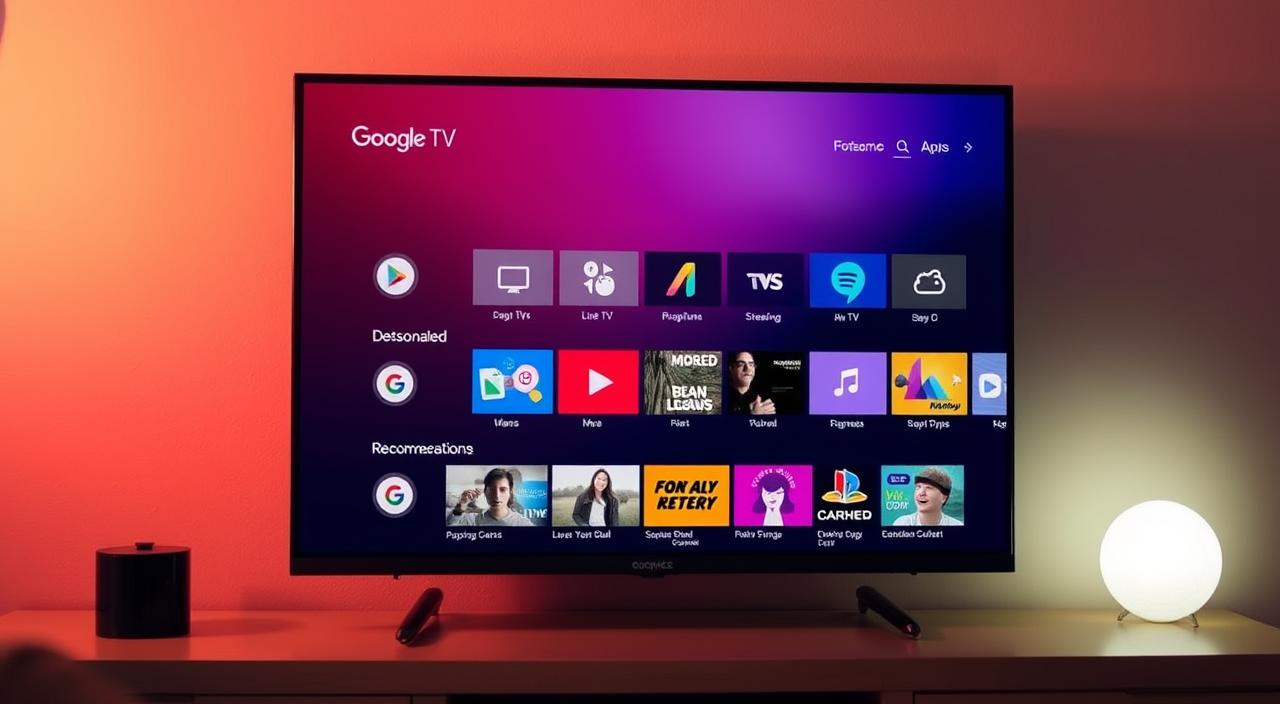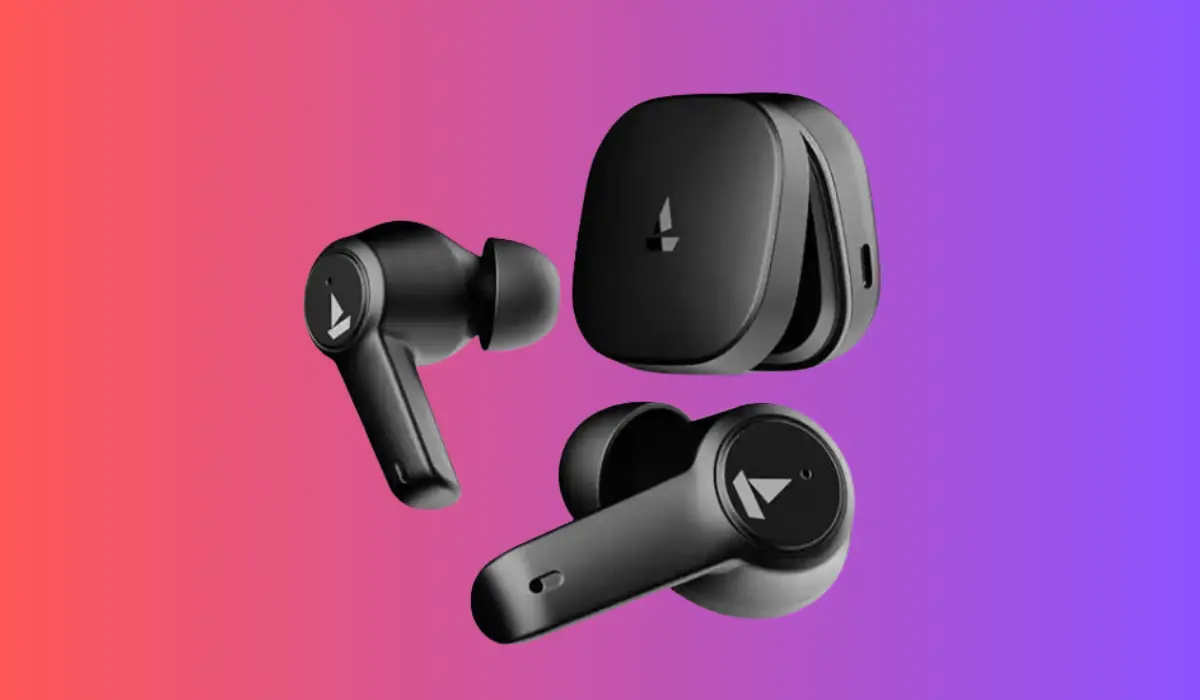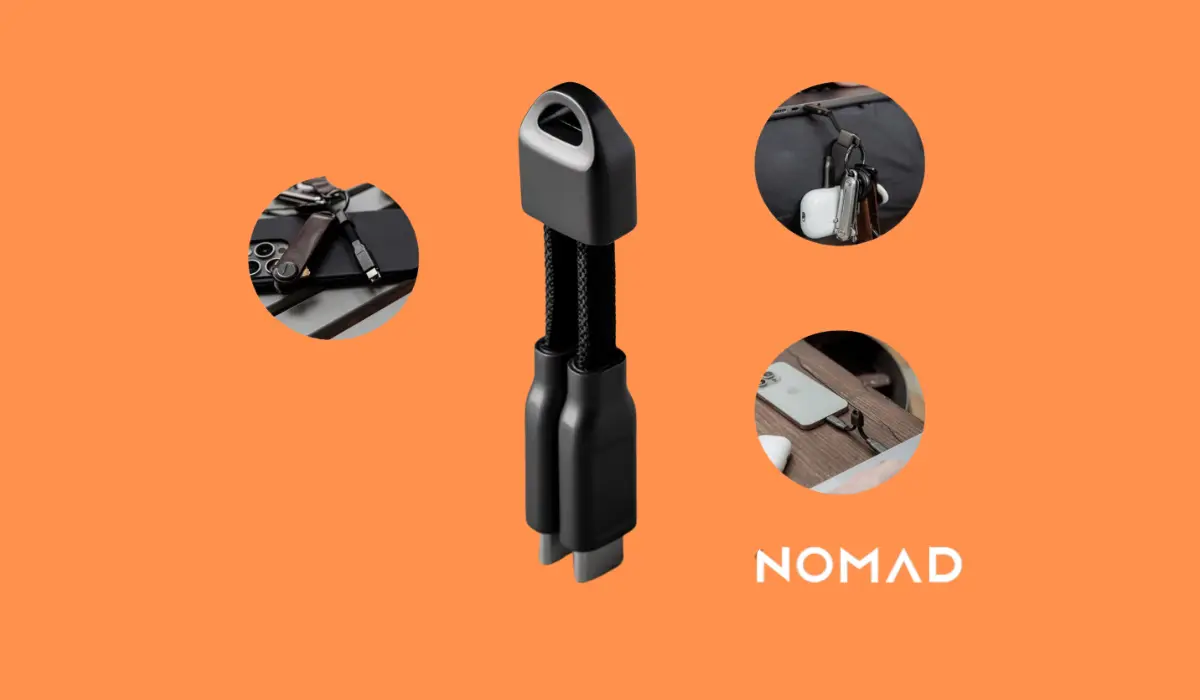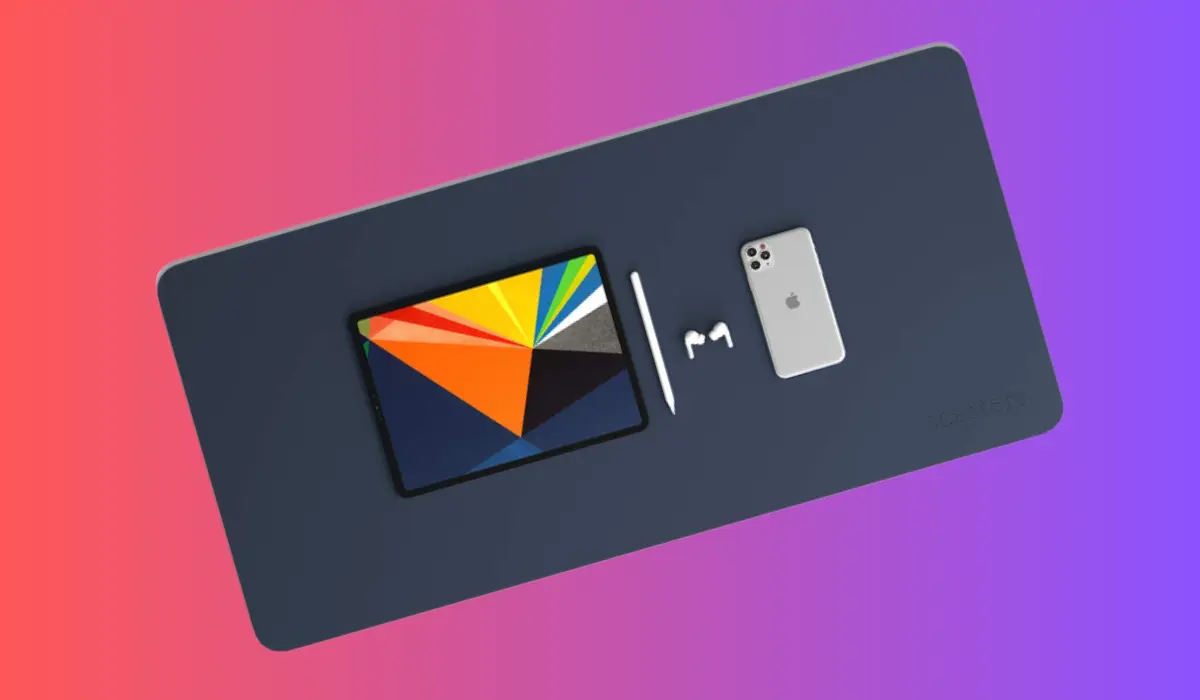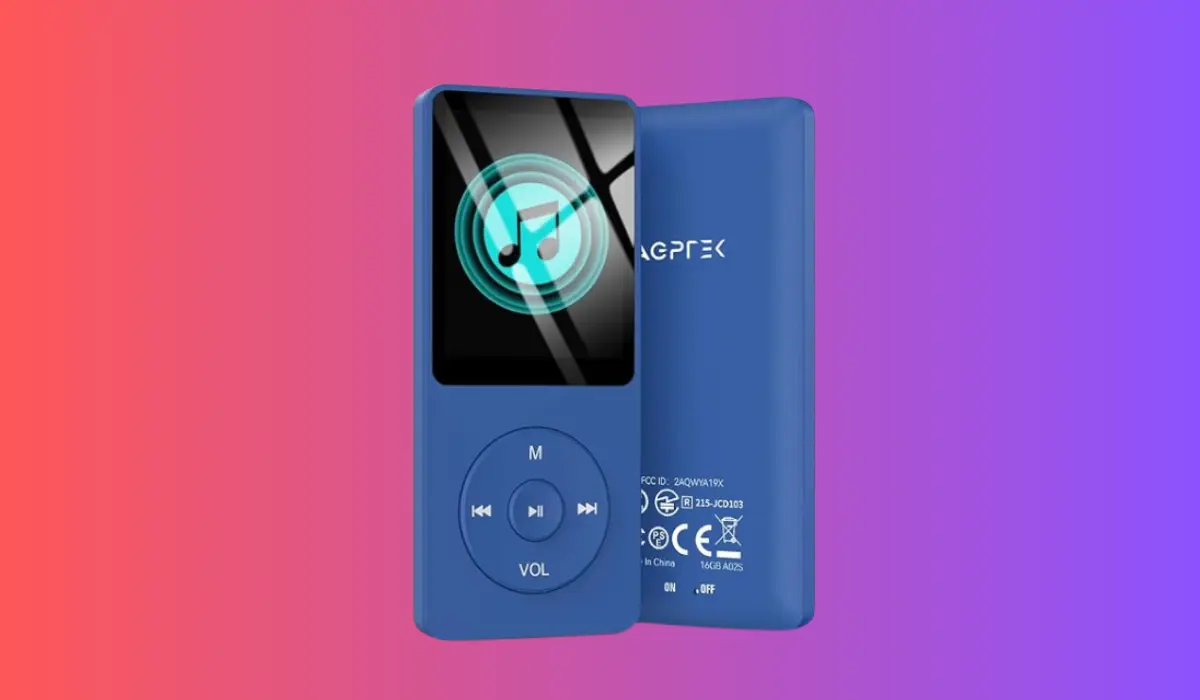Table of Contents
- 【Unique Pearl Look & Discreet Design 】 Tiny pearl-sized and logo-free design easily conceals the microphone, offering a completely discreet and professional appearance—perfect for live streaming, online teaching, weddings, interviews, and presentations. Weighing just 7 grams, it stays securely clipped to your clothing without sagging or drooping, letting you focus on your performance with style and comfort!
- ❗❗ [ 1 Year Warranty & Customer Services ] Hollyland wireless microphones have 𝟏 𝐲𝐞𝐚𝐫 𝐰𝐚𝐫𝐫𝐚𝐧𝐭𝐲 and an excellent after-sale support system. Please refer to the user manual or contact us directly for assistance. You can also DM us on Instagram at 𝐡𝐨𝐥𝐥𝐲𝐥𝐚𝐧𝐝.𝐢𝐧𝐝𝐢𝐚, and Hollyland Team will help you resolve any issues. 𝑸𝑰𝒁𝑨𝑹 & 𝑪𝑫𝑴 𝒂𝒓𝒆 𝒃𝒐𝒕𝒉 𝒐𝒇𝒇𝒊𝒄𝒊𝒂𝒍𝒍𝒚 𝒂𝒖𝒕𝒉𝒐𝒓𝒊𝒛𝒆𝒅 𝑯𝒐𝒍𝒍𝒚𝒍𝒂𝒏𝒅 𝒔𝒕𝒐𝒓𝒆𝒔. 𝒀𝒐𝒖 𝒄𝒂𝒏 𝒔𝒉𝒐𝒑 𝒘𝒊𝒕𝒉 𝒄𝒐𝒏𝒇𝒊𝒅𝒆𝒏𝒄𝒆, 𝒌𝒏𝒐𝒘𝒊𝒏𝒈 𝒘𝒆 𝒑𝒓𝒐𝒗𝒊𝒅𝒆 𝒕𝒉𝒆 𝒃𝒆𝒔𝒕 𝒔𝒆𝒓𝒗𝒊𝒄𝒆.
Are you struggling to choose the right audio gear for your podcast or live event? With so many options available, it’s easy to feel overwhelmed. But don’t worry—this guide is here to help you make the best decision.
When it comes to audio quality and convenience, a wireless microphone is a game-changer. It offers freedom of movement and ensures clear sound, whether you’re recording a podcast or hosting a live event. For Indian buyers, finding a reliable and affordable product is key.

One standout option is the Hollyland Lark series. Known for its exceptional performance and ease of use, it’s a top pick for professionals and beginners alike. This article dives into detailed reviews, technical insights, and expert opinions to help you choose the perfect wireless mic.
Key Takeaways
- Wireless microphones provide unmatched freedom and versatility.
- The Hollyland Lark series is a top choice for podcasts and live events.
- Indian buyers should focus on security, price, and performance.
- Detailed specifications and customer reviews ensure informed decisions.
- This guide covers industry-leading brands and technical insights.
Overview of Wireless Microphone Systems
Discover how wireless microphone systems have transformed audio recording and live performances. These systems eliminate the need for cables, offering unparalleled mobility and flexibility. Whether you’re hosting a live event or recording a podcast, a wireless microphone system ensures clear, high-quality sound.
Definition and Benefits
A wireless microphone system consists of a transmitter and a receiver. The transmitter captures sound and sends it to the receiver, which connects to an audio device. This setup provides freedom of movement and reduces clutter caused by cables.
Key benefits include:
- Mobility: Move freely without being tethered to a device.
- Simplicity: Easy setup and operation.
- Versatility: Suitable for various applications, from podcasts to live events.
History and Evolution
The journey of wireless microphone systems began in the mid-20th century. Early designs, like Shure’s Vagabond 88, used analog FM technology. These systems were bulky and prone to interference.
Over time, advancements in solid-state electronics and digital modulation improved performance. Brands like Sennheiser and Shure played pivotal roles in this evolution. Today, modern systems offer crystal-clear sound and reliable signal transmission.
| Year | Milestone |
|---|---|
| 1953 | Introduction of Shure’s Vagabond 88 |
| 1970s | Shift to solid-state transmitters |
| 2000s | Adoption of digital modulation |
| Present | Integration of advanced features like frequency hopping |
Understanding this history helps us appreciate the safety, design improvements, and availability of today’s systems. From tube-based transmitters to compact digital units, wireless microphone systems have come a long way.
Key Features and Benefits of a Wireless Microphone System
Choosing the right audio setup can make or break your event. A wireless system offers unmatched flexibility and performance, making it a top choice for professionals. Whether you’re hosting a live event or recording a podcast, these systems ensure clear and reliable sound.
Portability and Freedom of Movement
One of the standout features of a wireless system is its portability. Unlike traditional setups, it allows you to move freely without being tethered by cables. This is especially useful for presenters and performers who need to engage with their audience.
Additionally, the handheld design ensures ease of use. It’s lightweight and comfortable to hold, making it ideal for long events. The absence of cables also reduces noise interference, resulting in cleaner sound.
Technical Advantages
Modern systems come with advanced features like frequency stability and robust signal transmission. These ensure that your audio remains clear, even in crowded environments. Here are some key benefits:
- Mobility: Move around the stage or venue without restrictions.
- Sound Quality: Eliminate cable-related noise for crystal-clear audio.
- Versatility: Suitable for podcasts, live events, and more.
| Feature | Benefit |
|---|---|
| Portability | Enables flexible movement during events |
| Handheld Design | Comfortable and easy to use for extended periods |
| Frequency Stability | Ensures reliable signal transmission |
| Sound Clarity | Reduces interference for high-quality audio |
These features make a handheld wireless system a must-have for anyone looking to enhance their audio experience. Whether you’re a professional or a beginner, the right setup ensures your sound is always on point.
Spotlight on Hollyland Wireless Microphones
Hollyland’s Lark series redefines audio performance for professionals and beginners. Known for its innovative design and technical excellence, this product line caters to a wide range of audio needs. Whether you’re hosting a live event or recording a podcast, Hollyland’s solutions deliver unmatched clarity and reliability.
Introducing Hollyland Lark M1, Lark M2, Lark Max, and Lark C1
The Lark series includes four standout models: the M1, M2, Max, and C1. Each model is tailored to specific use cases, ensuring you find the perfect fit for your needs. The M1 and M2 are ideal for beginners, offering simplicity and affordability. The Max and C1, on the other hand, are designed for professionals, featuring advanced features like extended battery life and superior sound quality.
These handheld wireless microphones are built for versatility. They are lightweight, easy to use, and deliver crystal-clear audio. Whether you’re a musician, podcaster, or event host, the Lark series ensures you’re always heard loud and clear.
Innovative Wireless Design and Performance
Hollyland’s design philosophy focuses on minimizing latency and interference. The Lark series uses advanced technology to ensure seamless signal transmission, even in crowded environments. This makes it a reliable choice for live events and podcasting.
Key features include:
- Mobility: Move freely without worrying about cables.
- Sound Quality: High-fidelity audio for professional results.
- Ease of Use: Simple setup and intuitive controls.
These instruments are not just tools but essential companions for anyone serious about audio quality. With Hollyland, you get a blend of innovation, performance, and reliability that sets it apart from competitors.
In-Depth Look at Shure Wireless Solutions
Shure has long been a trusted name in audio technology, offering reliable solutions for professionals worldwide. Their systems are known for exceptional sound quality, durability, and advanced features. Whether you’re a live performer or broadcaster, Shure’s products are designed to meet your needs.
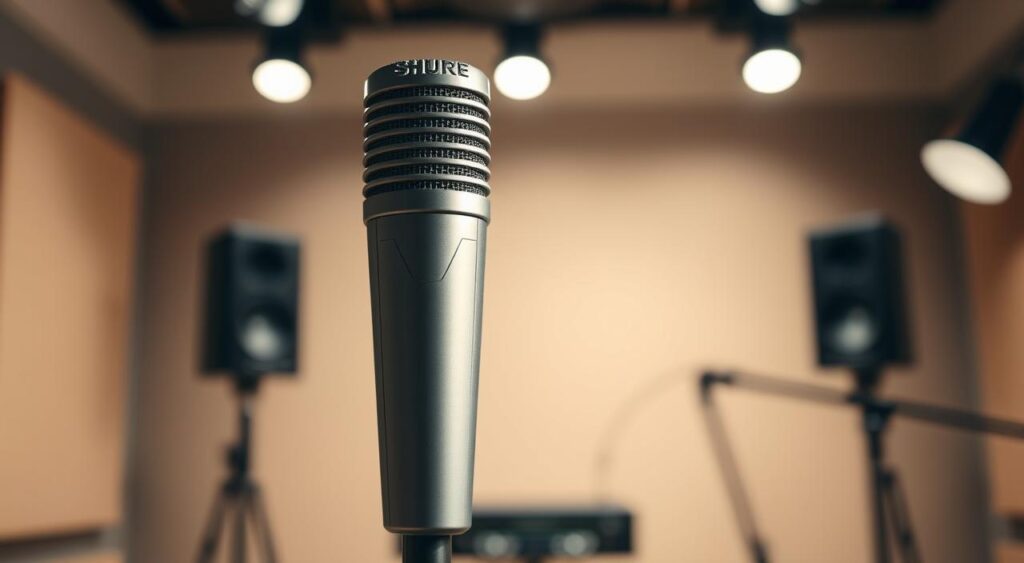
Shure GLXD24R SM58 and SLX4 Microphone Systems
The GLXD24R SM58 is a standout choice for live performances. It combines a dynamic microphone with a robust receiver for seamless signal transmission. The system is easy to set up and delivers crystal-clear audio, even in challenging environments.
The SLX4 system is another reliable option. It features a compact transmitter and a versatile receiver, making it ideal for both indoor and outdoor events. Its durable design ensures long-lasting performance, while the intuitive controls simplify operation.
Additional Shure Capsule Options: KSM9, KSM8, Beta 87a
Shure offers a range of capsule options to suit different applications. The KSM9 is a premium choice for studio recordings, offering unmatched clarity and detail. The KSM8 is designed for live performances, with a dual-diaphragm design that reduces feedback and enhances sound quality.
The Beta 87a is a versatile option for both singing and speaking. Its supercardioid polar pattern ensures excellent off-axis rejection, making it perfect for noisy environments. These capsules are compatible with Shure’s advanced transmitter and receiver systems, providing flexibility and performance.
Shure’s commitment to innovation and quality makes their products a top choice for professionals. From live events to studio recordings, their systems deliver consistent, high-quality audio that meets the demands of any application.
Comparison: Rode Wireless Go 2 Versus Competing Systems
- The Wireless GO II is an ultra-compact and extremely versatile wireless microphone system consisting of a dual channel receiver and two transmitters
When it comes to versatile audio solutions, the Rode Wireless Go 2 stands out as a top contender. Its compact design and advanced features make it a favorite among podcasters, event hosts, and content creators. This section dives into how it compares to other systems in the market, focusing on its unique strengths.
Rode Wireless Go 2 with Lavalier and Backup Recording Options
The Rode Wireless Go 2 shines with its lavalier functionality and backup recording capabilities. The lavalier option ensures clear and consistent audio, even in dynamic environments. This is particularly useful for interviews or presentations where mobility is key.
Backup recording is another standout feature. It allows users to record directly to the transmitter, providing an extra layer of security. This ensures that your audio is never lost, even if there’s a signal interruption. These features make it a reliable choice for professionals and beginners alike.
Accessory Considerations like the Go Windshield
Accessories play a crucial role in enhancing the performance of the Rode Wireless Go 2. The Go Windshield, for example, reduces wind noise during outdoor recordings. This accessory is essential for achieving professional-grade audio in challenging conditions.
Other accessories, such as the lavalier mic and carrying case, add to its versatility. These additions ensure that the system is ready for any scenario, from studio recordings to live events. The thoughtful design of these accessories highlights Rode’s commitment to user convenience.
Frequency management is another area where the Rode Wireless Go 2 excels. Its advanced technology minimizes interference, ensuring clear and reliable signal transmission. This is particularly important in crowded environments where multiple devices are in use.
Customer feedback and technical reviews consistently praise its ease of use, compact design, and high-quality audio standards. These factors contribute to its market leadership and make it a top choice for anyone seeking a reliable audio solution.
Sennheiser Wireless Solutions and Cutting-Edge Technology
- Compact capsule-shaped sturdy metal body cardioid directional USB microphone for distortion-free sound and very low self-noise, ideal for professional studio quality podcasting, streaming & broadcasting.
- Compact capsule-shaped sturdy metal body cardioid directional USB microphone for distortion-free sound and very low self-noise, ideal for professional studio quality podcasting, streaming & broadcasting.
- Compact Bodypack transmitter and robust instrument Cable
Sennheiser’s advanced audio solutions set the standard for professional sound systems. Known for their innovation and reliability, Sennheiser’s products cater to demanding applications like live events and broadcasting. Their focus on UHF technology and integrated amplification ensures superior performance in any environment.
Sennheiser EW G4 Receiver and Wireless Lavalier Options
The Sennheiser EW G4 receiver is a standout in the industry. It offers robust signal transmission and crystal-clear audio, even in crowded settings. Its compact design and intuitive controls make it a favorite among professionals.
Wireless lavalier options add versatility to the system. These are ideal for presentations and interviews, providing clear sound without restricting movement. The combination of the EW G4 receiver and lavalier options ensures seamless performance for any event.
Advanced Models: Sennheiser G3 EW 300, Sennheiser TC2
The G3 EW 300 is designed for professional applications. It features advanced frequency management and extended battery life, making it perfect for long events. Its durable construction ensures it can handle the rigors of live performances.
The TC2 model takes innovation further with digital hybrid technology. This reduces interference and enhances signal clarity, even in challenging environments. Both models exemplify Sennheiser’s commitment to quality and performance.
Key benefits of Sennheiser’s systems include:
- UHF Technology: Ensures reliable signal transmission over long distances.
- Integrated Amplifier: Delivers powerful, distortion-free audio.
- Robust Design: Built to withstand the demands of professional use.
These features make Sennheiser a trusted choice for professionals worldwide. Whether you’re hosting a live event or broadcasting, their systems ensure your sound is always on point.
Exploring Bluetooth Conference Speaker and Microphone Options
Bluetooth conference speaker and microphone systems are revolutionizing modern communication setups. These devices are designed to simplify meetings, enhance collaboration, and deliver crystal-clear audio. With seamless integration and user-friendly features, they are becoming essential tools for professionals across industries.
Integration and Ease-of-Use in Conference Settings
One of the standout features of Bluetooth systems is their effortless setup. Unlike traditional wired systems, these devices require minimal configuration. Simply pair the speaker and microphone with your device, and you’re ready to go. This makes them ideal for fast-paced environments where time is critical.
Many systems come with a built-in monitor, allowing users to track audio levels and ensure optimal performance. This feature is particularly useful in large conference rooms or outdoor settings where sound quality can vary. The intuitive interface ensures even first-time users can operate the system with ease.
Here are some key benefits of Bluetooth conference systems:
- Seamless Integration: Works with smartphones, tablets, and laptops for versatile use.
- Portability: Lightweight and compact, perfect for on-the-go professionals.
- Cost-Effectiveness: Eliminates the need for expensive wired setups.
| Feature | Benefit |
|---|---|
| Bluetooth Connectivity | Enables wireless pairing with multiple devices |
| Built-in Monitor | Ensures consistent audio quality |
| Portable Design | Ideal for travel and remote meetings |
These systems are not just limited to corporate settings. They are equally effective in educational institutions, training sessions, and professional seminars. Their versatility and innovative design make them a valuable addition to any communication toolkit.
“Bluetooth conference systems have transformed the way we conduct meetings, offering unmatched convenience and clarity.”
In conclusion, Bluetooth conference speaker and microphone systems are redefining modern communication. Their ease of use, portability, and advanced features make them a top choice for professionals seeking reliable and efficient audio solutions.
Variety of Capsule Options in Wireless Microphones
The diversity of capsule options in audio systems offers unparalleled flexibility for professionals. Whether you’re recording in a studio or performing live, choosing the right capsule can significantly impact sound quality and clarity. This section explores the range of options available, focusing on models from Shure and Rode.
Shure and Rode Capsule Models: KSM9, KSM8, Beta 58a
Shure’s KSM9 and KSM8 are renowned for their quality and precision. The KSM9 is a condenser capsule designed for studio recordings, delivering exceptional detail and clarity. Its dual-diaphragm design reduces feedback, making it ideal for live performances.
The KSM8, on the other hand, is a dynamic capsule known for its rugged construction. It’s built to withstand the rigors of touring while maintaining consistent sound quality. Rode’s Beta 58a is another standout, offering a supercardioid polar pattern for excellent off-axis rejection.
Product Differentiators and Performance Factors
When selecting a capsule, several factors come into play. Condenser capsules, like the KSM9, are ideal for capturing nuanced audio, making them perfect for studio work. Dynamic capsules, such as the KSM8, are more durable and better suited for live environments.
Here’s a quick comparison of key features:
| Model | Type | Best Use |
|---|---|---|
| Shure KSM9 | Condenser | Studio Recording |
| Shure KSM8 | Dynamic | Live Performance |
| Rode Beta 58a | Dynamic | Versatile Applications |
Expert reviews and technical validation highlight the importance of choosing the right capsule for your needs. Whether you prioritize detail, durability, or versatility, understanding these differentiators ensures you make an informed decision.
Product Features of Professional Radio Microphones
Professional radio microphones are essential tools for delivering flawless audio in high-stakes environments. Designed to meet the demands of live events and broadcasting, these devices combine advanced technology with robust construction. Their specialized features ensure consistent sound quality, even in the most challenging settings.
Applications in Live Events and Broadcasting
In live events like concerts, professional radio microphones excel in delivering clear and reliable audio. Their ability to handle high-pressure environments makes them a favorite among performers and sound engineers. These devices are engineered to minimize interference, ensuring uninterrupted sound during critical moments.
Broadcasting professionals rely on these microphones for their production quality. They meet stringent broadcast standards, offering features like frequency stability and extended range. This ensures that every word and note is captured with precision, whether it’s a live performance or a studio recording.
Key features include:
- Durability: Built to withstand the rigors of touring and outdoor events.
- Consistent Audio Output: Ensures clarity even in noisy environments.
- Advanced Signal Transmission: Reduces dropouts and interference.
Industry professionals endorse these microphones for their reliability and performance. Rigorous testing and adherence to technical specifications make them a trusted choice for high-stakes applications. Whether it’s a concert or a broadcast, professional radio microphones deliver unmatched audio quality.
Wireless Mic: Choosing the Right Wireless Mic for Your Needs
Selecting the ideal audio equipment requires careful consideration of performance and budget. Whether you’re hosting a live event or recording a podcast, the right choice ensures seamless sound quality and reliability. This guide will help you navigate the key factors to make an informed decision.
Key Considerations for Performance and Budget
When evaluating options, price is a critical factor. High-end models often come with advanced features, but mid-range products can deliver excellent performance without breaking the bank. Testing the product in real-world scenarios is equally important. Look for reviews that highlight its reliability in the field.
Battery life and connectivity are other essential criteria. A device with long-lasting power ensures uninterrupted performance, while robust connectivity minimizes signal dropouts. Balancing these technical attributes with your budget will help you find the best value.
Comparative Analysis Across Leading Brands
Brands like Hollyland, Shure, and Sennheiser offer a range of products tailored to different needs. Hollyland’s Lark series is known for its affordability and ease of use, making it a great choice for beginners. Shure’s systems, on the other hand, are favored for their durability and professional-grade sound quality.
Sennheiser stands out with its advanced technology and reliable signal transmission. Here’s a quick comparison of their key features:
| Brand | Key Features | Best For |
|---|---|---|
| Hollyland | Affordable, easy to use | Beginners, small events |
| Shure | Durable, professional sound | Live performances |
| Sennheiser | Advanced technology, reliable signal | Broadcasting, large events |
Expert reviews and customer feedback consistently highlight the importance of testing products before purchase. Many brands offer EMI financing options, making it easier to invest in high-quality equipment without upfront costs.
In conclusion, choosing the right audio solution involves balancing performance, price, and technical features. By comparing leading brands and considering real-world testing, you can find a product that meets your needs and delivers exceptional results.

Understanding Frequency, Spectrum, and Signal Integrity
Frequency management is a cornerstone of reliable audio transmission. Proper allocation of the spectrum ensures clear and uninterrupted sound, whether you’re recording a podcast or hosting a live event. This section dives into the technical aspects of frequency, spectrum, and signal integrity, helping you optimize your audio setup.
Overview of VHF/UHF Bands and Digital Transmission
The frequency spectrum is divided into VHF (Very High Frequency) and UHF (Ultra High Frequency) bands. VHF operates between 30 MHz and 300 MHz, offering longer range but limited penetration through obstacles. UHF, ranging from 300 MHz to 3 GHz, provides better signal clarity in crowded environments.
Digital transmission has revolutionized these bands by reducing interference and enhancing sound quality. Unlike analog systems, digital modulation ensures consistent audio, even in challenging conditions. Here’s a quick comparison:
| Band | Range | Best Use |
|---|---|---|
| VHF | 30-300 MHz | Outdoor events, long-range applications |
| UHF | 300 MHz-3 GHz | Indoor events, crowded environments |
Interference Management and Signal Reliability
Interference is a common challenge in audio systems. Advanced electronics and techniques like frequency hopping help minimize disruptions. Frequency hopping rapidly switches between channels, ensuring a stable connection even in busy areas.
Using high-quality cables and connectors also plays a crucial role in maintaining signal integrity. Proper shielding reduces noise, while robust connectors prevent signal loss. Real-world testing and advanced receiver designs further enhance reliability.
Key strategies for interference management include:
- Frequency Adjustment: Fine-tuning to avoid crowded channels.
- Digital Modulation: Ensuring clear and consistent audio.
- Advanced Receivers: Minimizing dropouts and interference.
By understanding these technical aspects, you can optimize your audio system for superior performance in any setting.
Technical Innovations in Wireless Microphone Systems
The evolution of audio systems has been driven by groundbreaking technical innovations. From analog to digital transmission, these advancements have transformed how sound is captured and delivered. This section explores the latest technologies shaping the industry, including companding and diversity reception.

Digital vs. Analog Transmission Benefits
Digital transmission has revolutionized audio systems by offering superior clarity and reduced noise. Unlike analog, which is prone to interference, digital signals ensure consistent sound quality. This is particularly beneficial in crowded environments where signal integrity is crucial.
Another advantage is the dynamic range. Digital systems can handle a wider range of frequencies, capturing both soft and loud sounds accurately. This makes them ideal for professional applications like broadcasting and live events.
Companding and Diversity Reception Technologies
Companding is a technique used to enhance the dynamic range of audio signals. It compresses the signal during transmission and expands it upon reception. This reduces noise and ensures clear sound, even in challenging conditions.
Diversity reception is another key innovation. It uses multiple antennas to prevent signal dropouts. By switching between antennas, the system maintains a stable connection, ensuring uninterrupted audio.
Here’s a quick comparison of these technologies:
| Technology | Benefit |
|---|---|
| Digital Transmission | Clear, noise-free audio |
| Companding | Enhanced dynamic range |
| Diversity Reception | Stable signal, no dropouts |
The effect of these innovations is evident in the improved performance of modern audio systems. Whether it’s a live concert or a podcast recording, these technologies ensure exceptional sound quality.
Computer-driven design simulations have also played a significant role. They allow manufacturers to test and optimize systems before production, ensuring reliability and efficiency. This has led to the development of advanced products from brands like Sony and Shure.
In conclusion, the shift to digital transmission, along with companding and diversity reception, has set new standards in audio technology. These innovations not only improve sound quality but also enhance the overall user experience.
Setup, Installation, and Technical Support Insights
Setting up your audio equipment correctly can make all the difference in performance. Whether you’re a beginner or a seasoned professional, following the right steps ensures your system works flawlessly. This section covers installation guidelines, best practices, and support options to help you get the most out of your setup.
Installation Guidelines and Best Practices
Start by choosing the right surface for your equipment. A stable, flat area ensures optimal performance and reduces the risk of damage. For bodypack transmitters, secure them firmly to avoid movement during use.
Here’s a step-by-step guide to setting up your system:
- Unpack and inspect all components for damage.
- Connect the receiver to your audio device using high-quality cables.
- Power on the transmitter and receiver, ensuring they’re on the same frequency.
- Test the system in your event space to check for interference.
Experts recommend testing your setup at least a week before your event. This allows time to troubleshoot any issues and ensures everything runs smoothly on the big day.
Customer Support and Warranty Considerations
Reliable customer support is essential for resolving technical issues quickly. Most brands offer warranties that cover defects for up to a year. Always check the warranty terms before purchasing to understand what’s included.
Here are some tips for accessing support:
- Register your product online to activate the warranty.
- Keep your receipt and packaging for easy returns or replacements.
- Use authorized service centers for repairs to maintain warranty validity.
Many brands also provide EMI financing options, making it easier to invest in high-quality equipment. This is particularly useful for professional setups where upfront costs can be high.
By following these guidelines and leveraging available support, you can ensure your audio system performs at its best for years to come.
Customer Reviews, Expert Opinions, and Practical Tips for Using Wireless Microphone Systems
Understanding real-world performance and user experiences is key to maximizing your audio setup. Whether you’re a podcaster, musician, or event host, combining customer feedback with expert advice ensures you get the most out of your equipment. This section dives into maintenance, battery life, and field performance, along with tips for different event scenarios.
Maintenance, Battery Life, and Field Performance
Proper maintenance is essential for handheld wireless systems to perform consistently. Regularly clean the microphone grille and check connections to prevent issues. Experts recommend storing devices in protective cases to avoid damage.
Battery life is another critical factor. Always carry spare batteries or a portable charger for long events. Testing your equipment before use ensures it’s ready for action. Here’s a quick checklist for field performance:
- Inspect all components for wear and tear.
- Test the system in the event space to check for interference.
- Ensure batteries are fully charged and spares are available.
Usage in Different Event Scenarios
From small gatherings to large concerts, your audio needs vary. For intimate settings, a headset wireless microphone offers hands-free convenience and clear sound. It’s ideal for presentations or interviews where mobility is key.
For musicians, especially guitar players, wireless systems provide freedom to move on stage. Look for models with low latency and robust signal transmission. Here’s a comparison of systems for different scenarios:
| Scenario | Recommended System |
|---|---|
| Small Events | Headset Wireless Microphone |
| Concerts | Handheld Wireless System |
| Broadcasting | Professional Radio Microphone |
Real-world tips from professionals include testing your setup in advance and using high-quality accessories. For guitar performances, ensure the system is compatible with your instrument and offers minimal latency.
By combining expert advice with practical insights, you can make informed decisions and elevate your audio experience. Whether you’re hosting a live event or recording a podcast, these tips ensure your equipment performs at its best.
Conclusion
Finding the right audio solution for your needs can be a game-changer for any event or recording. From advanced UHF technology to versatile lavalier microphone options, the right choice ensures clear and reliable sound.
Hollyland, Shure, Rode, and Sennheiser offer top-tier systems tailored to different needs. Whether you’re a beginner or a professional, these brands deliver exceptional performance. Always consider installation, maintenance, and warranty policies to maximize your investment.
Advanced UHF systems provide superior signal clarity, even in crowded environments. This ensures your sound remains uninterrupted, whether you’re hosting a live event or recording a podcast. Proper setup and care further enhance product longevity.
In today’s competitive world, making an informed decision is crucial. By focusing on performance, budget, and technical features, you can confidently choose the best audio solution for your needs.
FAQ
What are the benefits of using a wireless microphone system for live events?
Wireless systems offer portability and freedom of movement, making them ideal for live performances, conferences, and dynamic presentations. They eliminate cable clutter and provide clear, reliable audio transmission.
How do I choose the right wireless microphone for my podcast?
Consider factors like frequency range, battery life, and compatibility with your recording setup. Brands like Shure, Sennheiser, and Rode offer models tailored for podcasting with excellent sound quality and ease of use.
What is the difference between VHF and UHF in wireless microphones?
VHF (Very High Frequency) and UHF (Ultra High Frequency) refer to the frequency bands used for transmission. UHF systems generally provide better signal reliability and less interference, making them suitable for professional applications.
Can I use a wireless microphone system with a Bluetooth conference speaker?
Yes, many modern systems integrate seamlessly with Bluetooth-enabled devices, offering flexibility for conference settings and presentations. Ensure compatibility between the microphone and speaker for optimal performance.
What are the key features of the Hollyland Lark series?
The Hollyland Lark series, including models like Lark M1, M2, Max, and C1, is known for its compact design, long battery life, and high-quality audio transmission. These systems are perfect for content creators and live event professionals.
How does the Rode Wireless Go 2 compare to other systems?
The Rode Wireless Go 2 stands out with its built-in backup recording, compact design, and compatibility with lavalier microphones. It’s a versatile choice for vloggers, filmmakers, and presenters.
What are the advantages of digital transmission in wireless microphones?
Digital transmission offers superior sound quality, reduced interference, and enhanced security compared to analog systems. It’s ideal for professional broadcasting and live events.
How do I manage interference in wireless microphone systems?
Use systems with diversity reception, choose less congested frequency bands, and ensure proper antenna placement. Regularly scan for interference and adjust settings as needed for optimal performance.
What should I consider when setting up a wireless microphone system?
Follow installation guidelines, test the system before use, and ensure proper antenna positioning. Check battery levels and frequency settings to avoid disruptions during your event.
How do I maintain my wireless microphone system for long-term use?
Regularly clean the microphone and transmitter, store them in a safe place, and replace batteries as needed. Follow the manufacturer’s maintenance recommendations to ensure consistent performance.
